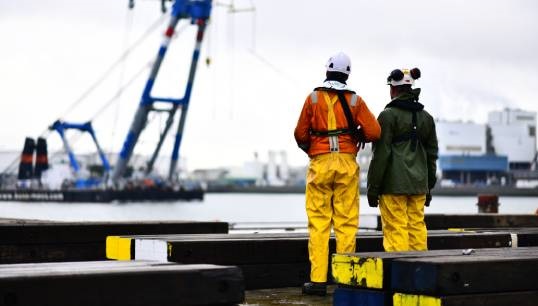'Unaddressed crisis': one in four seafarers still denied shore leave, new study finds
2 April 2025

A recent study conducted by the ITF Seafarers' Trust (ITFST) and analysed by the World Maritime University (WMU) reveals that a significant number of seafarers continue to face restrictions on shore leave, despite the easing of Covid-19-related travel barriers since 2022.
The research, which surveyed nearly 6,000 seafarers worldwide between May and December 2024, confirms perceptions of the worsening trend for crew members, particularly those in lower ranks or onboard certain types of vessels. Researchers said the findings highlight 'an unaddressed crisis' – where a significant proportion of seafarers are stuck for extensive periods onboard ship with no access to shore leave or even shore-based services.
The study found that more than a quarter of seafarers did not get any shore leave at all during their contracts, and a third only got ashore once or twice during their entire contract, based on an average of 6.6 months onboard.
Particularly high rates of shore leave denial were reported by seafarers on bulk carriers and container ships. Officers and ratings in engine and deck departments, especially lower-ranked crew, reported the most frequent restrictions. These denials have significant consequences for the mental health of affected seafarers, exacerbating an already challenging work environment.
Nautilus head of international relations Danny McGowan said: 'The results of this survey add further backing to the Nautilus Federation report on Seafarer Recruitment and Retention.
'Difficulty accessing shore leave – both during the Covid-19 pandemic and after – has been one of the recurring themes negatively impacting the attractiveness of the maritime industry. It is time now for action from shipowners and governments to resolve the issues in our report, issues that the industry is well aware of – otherwise the looming shortage of seafarers will become another crewing crisis.'
The study reveals the largest affected groups of seafarers hail from India, China, and the Philippines, followed by Indonesia, Ukraine, the United States, Turkey, Russia, and Croatia. Despite nearly 75% of vessels spending between one and three days in port, which should theoretically allow for shore leave, many crew members continue to face significant barriers.
While some improvements have been reported since the height of the pandemic, key barriers persist such as fatigue from heavy workloads while in port, port restrictions, company policies, visa challenges and charging for shore leave or expensive private transport where port terminals are closed due to security reasons. Younger and less experienced seafarers were found to be more likely to be denied shore leave compared to senior officers.
Despite well-intentioned Maritime Labour Convention 2006 provisions for shore leave, the report says fast turnarounds in port, intense workload and all sorts of restrictions, including financial ones, remain untouched and unaddressed by authorities. Strengthening the rights of seafarers with respect to shore leave is one of the proposals workers' representatives will be pushing for in the latest round of proposed amendments to MLC to be discussed at The Fifth Meeting of the Special Tripartite Committee of the MLC in Geneva from 7–11 April 2025. The International Maritime Organization's Convention on Facilitation of International Maritime Traffic (FAL Convention) requires that seafarers be granted shore leave whenever possible and prohibits discrimination based on nationality or rank. The ITFST said the report is clear that the problem is systemic and multifaceted, with action needed from all stakeholders.
Tags
More articles
Nautilus Federation report shows clear pathways to tackle seafarer recruitment and retention crisis
The Nautilus Federation, a group of 21 likeminded global trade unions in shipping and inland waterways transport, has released a new report which aims to finally end the conversation on recruitment and retention of seafarers, and prompt the industry to act on the issue.
Maritime Labour Convention amendments – what are we hoping for?
Seafarers: share your views on your work-life balance in new World Maritime University survey
World Maritime University (WMU) is seeking all seafarers who are currently working on any commercial ship, or have worked on such ships during or after 2013, to participate in a survey on their experience of work, psychological wellbeing, and career intentions.
Nautilus pushes for fair working conditions at maritime roundtable with IMO
Nautilus assistant general secretary Sascha Meijer took part in a roundtable in Rotterdam looking at the future of the maritime sector, which was also attended by International Maritime Organization (IMO) secretary general Arsenio Dominguez.
